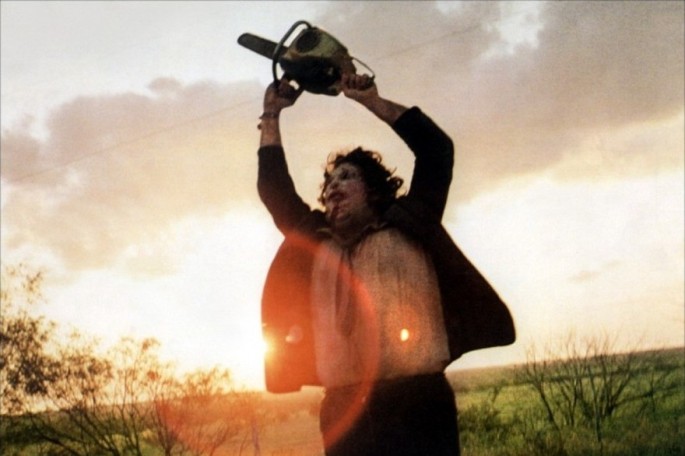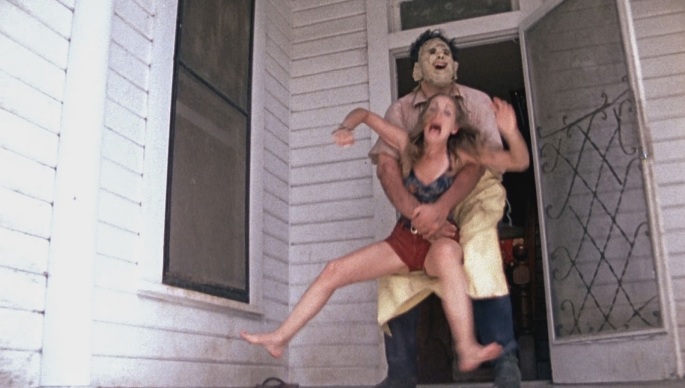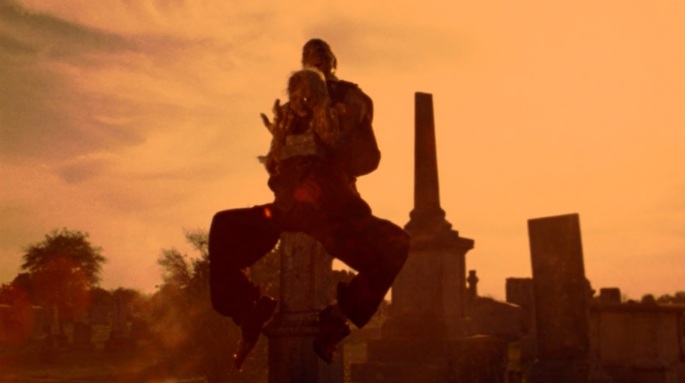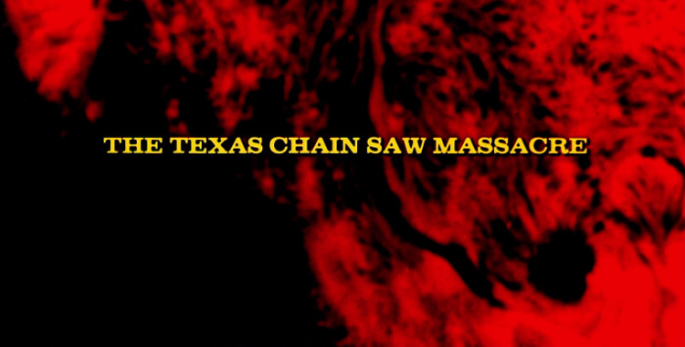
The cinematic world was deeply saddened by the passing of Tobe Hooper in late August. Responsible for some of the most iconic American films in the horror genre, Hooper’s legacy will always be remembered for pushing boundaries and using ours fears as a means of self-reflection. This week, Ben and Kyle sat down to discuss Hooper’s masterpiece, The Texas Chain Saw Massacre.
BEN: Like many classics, I’m sad to say that this is yet another film that I had not previously seen. Despite it being the father to so many other films, whether horror, sci-fi, thriller or a combination there of, Hooper’s film looks every bit his $300,000 budget and even more.
KYLE: Wait, you’d never seen it until now? Why did you wait so long!?
Ben: I can’t honestly answer that. I really didn’t gravitate towards horror films when I was a kid. Even as an adult, slicing people with knives or razors still creeps me out. Which is why the sequence in the van when they pick up the hitchhiker works so very well. Edwin Neal played ‘freaked out’ to the hilt, but it was the close quarters of the van and Daniel Pearl’s camerawork that really make the magic happen. And that was Tobe Hooper’s gift. His film is shot and edited in such a way that it makes you think you’re seeing more than you actually are; the mind plays tricks on you.
KYLE: Absolutely. It’s part of the film undeniable charm. From the first shot, you know you’ve waded into a greasy pit of hell. I love that you mentioned the close quarters. Paranoia is an important part of this film, both from the experience the characters endure and in how America was feeling at the time. The country was still reeling from Vietnam and I think that is why it was so popular. That and the outstanding cinematography and editing.

BEN: The technical achievements aside, this film is torture porn with bits of voyeurism if I’m not being too blunt. Sally’s screams uttered from Marilyn Burns were ear piercingly jarring, but they were effective. Paul Partain probably had the more difficult roles as a paraplegic, but his acting got on my nerves towards the end of the film.
KYLE: I like how it switches between presumed violence and voyeurism depending on the situation. It’s somewhat tame by today’s standards and yet, it’s unrelentingly bleak without being a complete downer. A lot of modern horror comments on the darkness within everyone where Hooper was more interested in exploring a darkness that is almost inhuman. Again, perhaps it is a comment on the place where the nation was at during filming?
BEN: Oh, I very much liked the framing using the graphic news clips to place you in the middle of everyday life throughout the United States in the mid-1970’s. More specifically, the use of a grave robber was creepy enough. Young college-aged kids were more apt to be adventurous, which is why they picked up the hitchhiker with such ease. And yet, they were skeptical.
KYLE: That is a great point. It’s interesting how this is the proto-slasher and yet, it has a lot of qualities that are outside the niche genre, specifically with respect to the kids being skeptical. I also enjoyed how sexuality was underplayed. It is part of the world, but not the focus. While the 80’s was filled with a lot films who used sexually charged victims as bait for the underage VHS generation, this is a smart film, both in its handling of violence and treatment of its subject matter.

BEN: Alan Danzinger as Jerry, William Vail as Kirk and Teri McMinn as Pam were effective at helping to convey the free-spirited nature of the times; it was almost like looking at a time capsule. It helped that Hooper and Kim Henkel’s script incorporated the news clips I mentioned earlier.
Despite the marketing and the opening monologue by John Larroquette, this was not a true story. Hooper admitted that his inspiration for the story elements reflected the distrust of the government including Watergate, the 1973 oil crisis, and Vietnam. The character of Leatherface and some of the plot details were based on serial killer Ed Gein.
KYLE: This is the heart of the film and the reason I think it retains its legendary status decades later. The best films are often reflections of their time and TCM is a great example of one of the many things that can be birthed in the midst of a counterculture revolution.
BEN: Gunnar Hansen had the unenviable task of playing Leatherface, someone who had to thrash about the frame while trying to project his character’s intentions at the same time. One might think it would be easy to use a chainsaw to point in a direction. Without motivation, there’s no pointing.
KYLE: And the chainsaw almost killed one of the cast members! Almost every cast member was injured during production. Marilyn Burn’s costume was so drenched with blood it had completely stiffened by the time they wrapped. It’s details such as this only enhances the film’s notorious mystique.

BEN: I found it interesting that Hansen took the time to get his inspiration from special needs children, learning their movements, which Hooper keyed in on. The house in Round Rock, Texas plays as much as role in the film as the other characters. Who ever thought that a farmhouse with a white picket fence could be so menacing? Robert A. Burns’ art direction added the textures that bring the house to life.
KYLE: Absolutely. The film presents an idea of a hidden, haunted American backwoods filled with all manner of horrors, all of which are human. Fear, when distilled through our own world is the most potent brand imaginable because the audience already knows the world is a dark place. Hooper’s masterful understanding of this and using it as a weapon against the unsuspecting is just one more ingredient in a perfectly tainted recipe.
BEN: The local Alamo Drafthouse here in Phoenix screened it, in honor of the late Tobe Hooper. They had a DCP, but it looked like I was watching a 35mm print, it looked that good. I was surprised to learn that Hooper used 16mm film, which explains the harsher look. Massacre is a stunning technical achievement for its budget. Between the editing by Larry Carroll and Sally Richardson, Burns’ use of real rotting carcasses, and Pearl’s stunning cinematography, Tobe Hooper’s film is a tribute to the cast and crew’s dedication. I would definitely revisit this film again.
KYLE: It’s one of my favorite films of all time because it shows that a big budget isn’t required to make an influential film that continues to hold up. Hooper’s guerilla tactics behind the camera congealed with a thrilling ensemble and unspeakable visuals to create one of the most important horror films ever made.
Ben and Kyle would like to thank you for continuing to follow their conversations. Join them next week as they discuss their favorite Jennifer Lawrence performances in honor of the release of Mother!.
